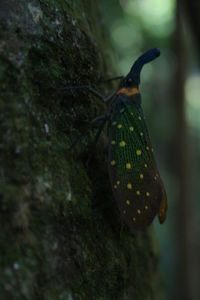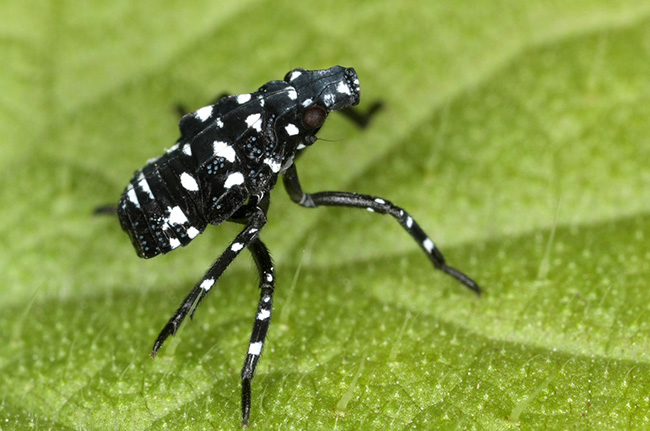
I''s like you really came up with that concoction and you thought it was gonna work?" she said. Korman added that she's heard of many different ways people have handled the insects, which has ranged from detergents, alcohol and even kerosene. Extreme heat or cold also does the trick as well. There are numerous ways to kill them, including the use of pesticides or simply crushing them. "The only good ones are dead ones," Korman said. Scrapping and destroying the eggs also helps control the population.

The state of Ohio has a form residents can fill out. If you don't feel up to killing a spotted lanternfly, Hamilton added the next best thing to do is to take a picture of it and report it to your state's department of agriculture. "First thing you should do is kill it," Hamilton said.

The states impacted by the spotted lanternfly have a variety of ways to handle the population, but they all have the same goal. What to know about the bigger, annual cicadas Hearing cicadas again?: It's not Brood X.
#Red lantern bugs how to
We haven't cracked the nut and how to really manage populations of this insect very well." "We're still working on ways to manage this insect. "This insect has the potential to be such a significant economic burden," Korman said. The study also found current spotted lanternfly-related damage is estimated to be $50.1 million per year with a loss of 484 jobs. A worst-case scenario estimates a $554 million economic loss and almost 5,000 jobs lost. A January 2020 study done by the Penn State's College of Agricultural Sciences found that if the species isn't contained, it could result in at least a $324 million hit to the state's economy and the loss of around 2,800 jobs. They've destroyed vineyards throughout Pennsylvania, according to the Philadelphia Inquirer. And yet it's been so successful in taking over our landscapes," Korman said. "It's sort of like the Pandora's box of problems." "It seems like it's such a fragile insect. The mold these lanternflies leave can end up in backyards and decks and can attract numerous other bugs.

It is a substrate for mold, and when it gets on plants, it prevents them from photosynthesizing which then leads to the plants dying. The spotted lanternflies secrete a sticky material known as honeydew, which is very high in sugar. As Amy Korman, a horticulture educator for Penn State Extension, says, "What goes in must come out." However, they cause massive damage to plants and are known to feed on over 70 different types of trees and plants.īut the damage doesn't end there. The good news about the insects is that they can't harm humans or pets. "Most people don't even know they've got them until the adult form comes out."

"They're very good hitchhikers," Hamilton told USA TODAY. In Pennsylvania, there are 34 counties currently under quarantine. From hiding on cars and packages, they've become such a problem that New Jersey and nearby areas have issued quarantine orders, asking people to inspect their vehicles before traveling. They may have spread so easily because they are hard to notice. Now, they can be seen throughout the northeast and mid-Atlantic, from the five boroughs in New York City to parts of Indiana. The invasive insects – which actually don't fly but rather are leafhoppers – were first spotted in Pennsylvania less than 10 years ago. via a crate coming from the Asian country. The spotted lanternfly originates from China, and George Hamilton, department chair of entomology at Rutgers University, believes they landed in the U.S. Though it may seem like a colorful moth worthy of an Instagram post, it's actually an invasive species that can wreak havoc on trees, plants and other landscapes, resulting in millions of dollars in damages. Whether you choose to kill insects or not, there is one bug across the northeastern United States health officials want you to take care of immediately: the spotted lanternfly.


 0 kommentar(er)
0 kommentar(er)
